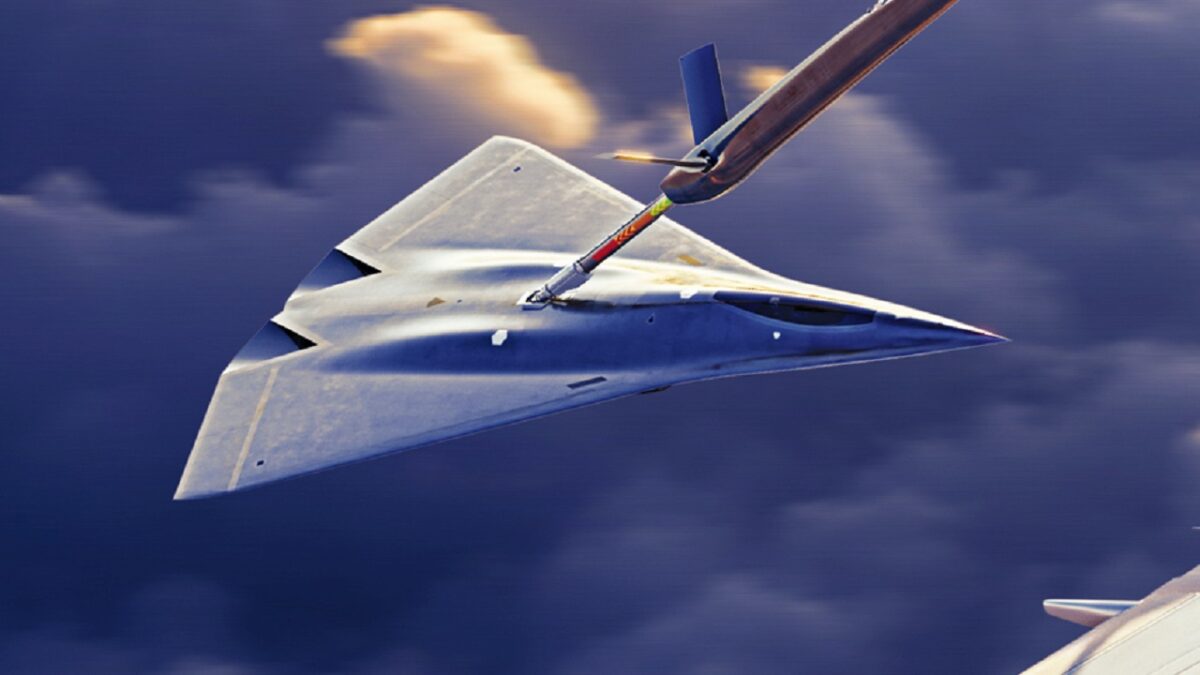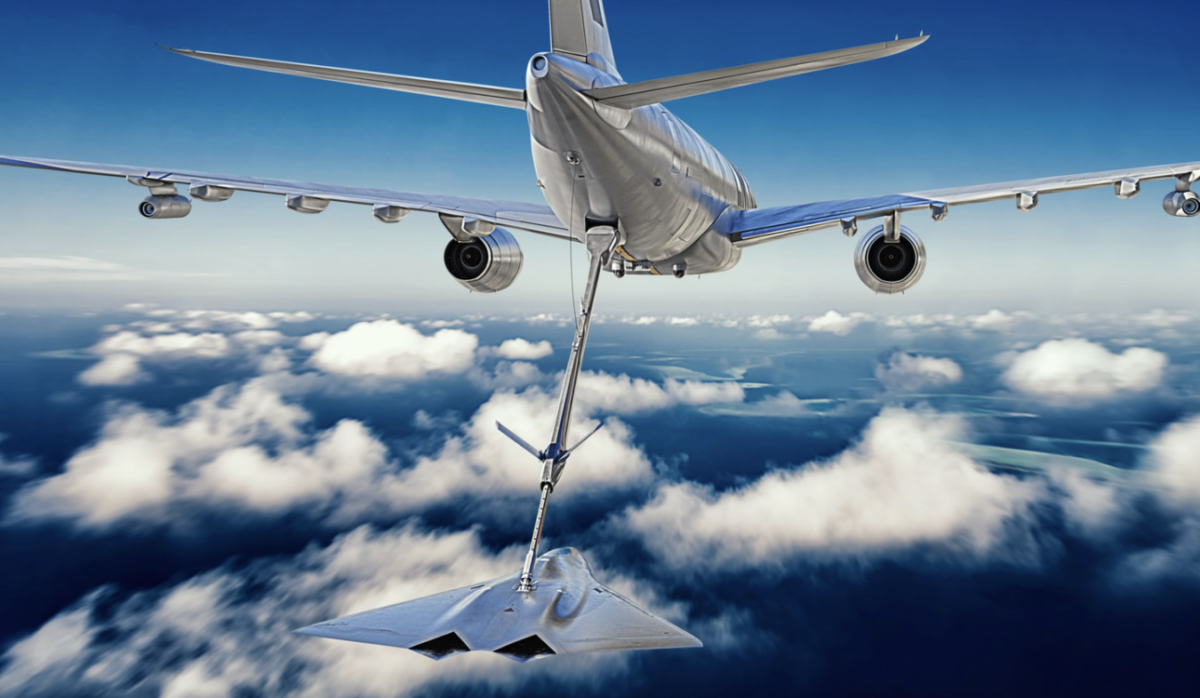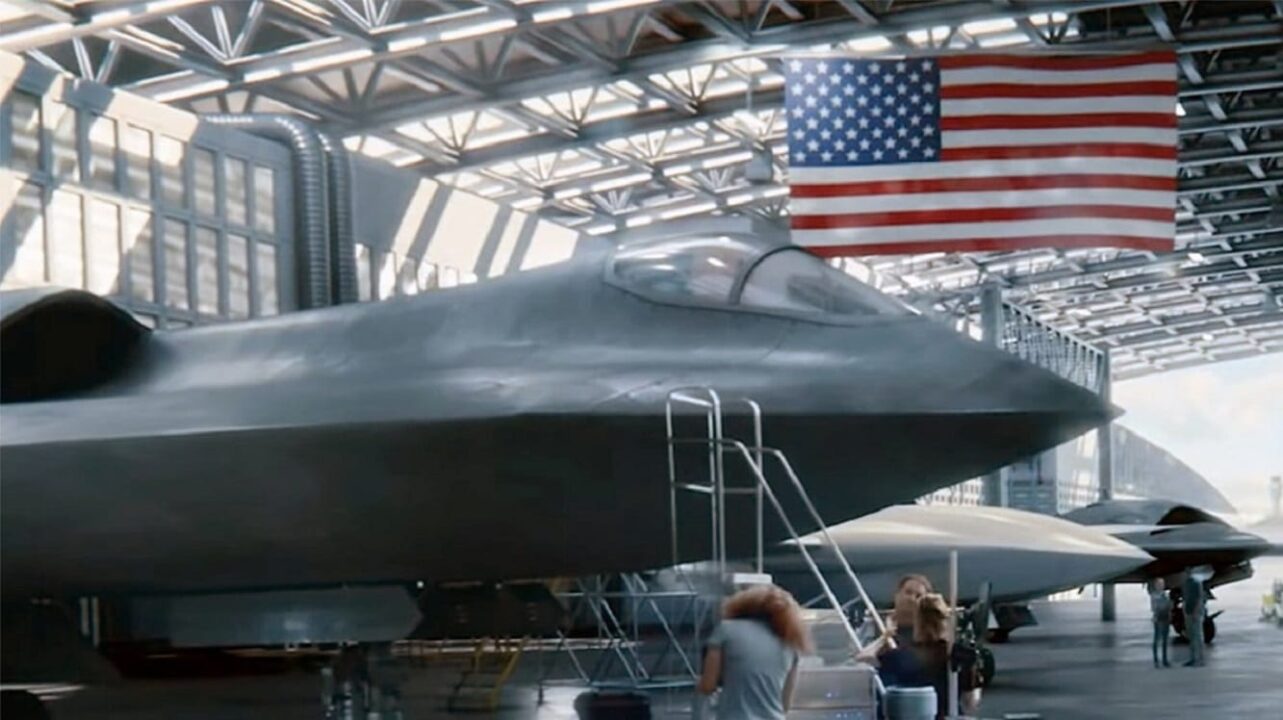We have covered the U.S. Air Force’s Next Generation Air Dominance (NGAD) fighter extensively here at 19FortyFive. Now there is a new development that gives us clues about what the NGAD will look like. Lockheed Martin released new artist renderings of the airplane to build suspense and interest about the sixth-generation fighter along with a new tanker. The NGAD does not have a flying wing design, nor does it feature a traditional shape that you see with fifth generation fighters such as the F-22 and F-35.
At a briefing for reporters this morning on its LMXT refueling tanker, Lockheed Martin released two concept art images of LMXT gassing up an NGAD fighter. This isn’t necessarily what NGAD would look like, they said, but an interesting glimpse nevertheless. pic.twitter.com/hgfneG4AL9
— Stephen Loose-eye ?? (@StephenLosey) October 25, 2022
NGAD: More Details on Notional Design
This NGAD notional rendering has a tail-less diamond-shape design. No tail means that stealth attributes will be maximized. There is a longer fuselage and the edges forming straight angles. Weapons will be held internally as you would expect. The airplane is shown refueling in the artwork. The NGAD portrayed in the picture appears to show inlets for two engines that are set inside the diamond-shaped wings. This will help conceal engine exhaust to minimize infrared signature and reduce sensor detection. No intakes are apparent in the rendering.
Remind Russia and China of American Strength In the Skies
While you would expect the U.S. military to keep most details of the NGAD under wraps, it is interesting that Lockheed Martin has no qualms about releasing these latest concept pictures. Civilian and uniform Air Force brass often discuss it in public – likely hoping the buzz surrounding NGAD will be a public relations boost to American aerospace ingenuity and skill. This will also show Russia and China that their newer Su-57 and J-20 fifth generation fighters will be eclipsed by the end of the decade.
Race to 2030
NGAD has not entered the critical engineering, manufacturing, and development (EMD) phase. The Air Force wants the sixth-generation fighter to be ready to enter service by 2030. So, achieving EMD would likely commence later next year. The technology behind NGAD will have to mature more than it has now. System integration will be key as NGAD is taking a “family of systems” approach. Individual elements will be developed separately and then come together under a single program.
Teaming with Drones
Family of systems also means that there will be a mixture of manned and unmanned aircraft flying under the NGAD banner. The main manned fighter would play quarterback to at least one “loyal wingman” stealth drone that can help with electronic warfare and jamming, additional weapons delivery, intelligence and reconnaissance data collection, or damage assessment after ground strikes. This means the NGAD program is integrating air-to-surface munitions.
Eclipse the F-22 Specs
NGAD will match or exceed F-22 capabilities so that its speed would be around MACH 2.8 with a ceiling of at least 65,000 feet. NGAD should have a larger fuel tank to deliver its weapons in the Indo-Pacific theater. And judging by the latest artist renderings, aerial refueling will be second nature for the NGAD.
NGAD Program Has Been Expensive
The Air Force has already plowed $2.5 billion into the NGAD program since 2018 and that bottom line number will rise to $9 billion by 2025. Air Force Secretary Frank Kendall has admitted previously that each NGAD fighter could cost “hundreds of millions of dollars.”
Future Procurement
There are around 185 F-22s in the Air Force inventory, but they will likely not be replaced “one for one” by the NGAD. The service branch may only buy 100 of the next generation airplanes.

Image Credit: Lockheed Martin.

Image: Lockheed Martin.
We will continue to be on “fighter watch” for the foreseeable future to keep you informed about this program. It still has many deadlines and milestones to hit, and it may endure its share of schedule slips and budget overruns, but the Air Force appears serious about delivering it by 2030. The technology driving the family of systems approach will continue to advance as the program grows. This will make the competition nervous and boost the confidence of the Air Force in its quest to achieve air dominance in the skies over East Asia or Europe.
Expert Biography: Serving as 1945’s Defense and National Security Editor, Dr. Brent M. Eastwood is the author of Humans, Machines, and Data: Future Trends in Warfare. He is an Emerging Threats expert and former U.S. Army Infantry officer. You can follow him on Twitter @BMEastwood. He holds a Ph.D. in Political Science and Foreign Policy/ International Relations.

